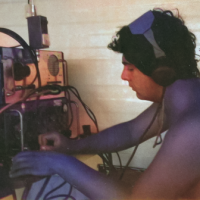SmartSDR v4.1.3 | SmartSDR v4.1.3 Release Notes
SmartSDR v3.10.15 | SmartSDR v3.10.15 Release Notes
The latest 4O3A Genius Product Software and Firmware
Need technical support from FlexRadio? It's as simple as Creating a HelpDesk ticket.
Help required for SDC Skimmer for Flex
Answers
-
Yuri, those are the commands used by the Maestro to transmit CW. Still the sidetone must be generated somehow locally, as the Maestro does.
0 -
Hi!
I would like to ask for help from my esteemed colleagues.
When controlling the slice tuning frequency, the center frequency of the panorama is often changed. This leads to constant resetting of all decoders in the skimmer program. Also it can lead to IQ stream out of the frequency plan.
Q: Can I get an IQ stream that will not be linked to a SmartSDR panorama?
0 -
Hi!
I want to implement audio stream transmit via SmartSDR-API (UDP). This will make it easier to use SDC-Contest in macOS.
Where can I find such documentation? You can e-mail ut4lw-at-yahoo-dot-com.
0 -
Are you asking about a list of Flex API TCP commands?
There is a section in the Flex WiKi for this: https://github.com/flexradio/smartsdr-api-docs/wiki/SmartSDR-TCPIP-API
In the list of TCP commands:
Alan. WA9WUD
0 -
And, here is the link for the full WiKi
Alan
0 -
Thank you, Alan!
I see a lot of interesting information. Hopefully, I'll find some answers.
Questions I want to ask before studying the documentation:
- What UDP port number does the transceiver open to receive DAX-TX datagrams?
- Is the CALLBACK process used to send datagrams, or do I have to define the time at which to send datagrams myself?
0 -
I do not know for sure, most of my knowledge is on the TCP side.
I recommend this Programming Primer, as a good read. It is dated, but the general concepts are still good.
Alan
0 -
From the Primer:
Setting the UDP streaming port
In a multi-client environment each client needs its own UDP streaming port if it wants to receive streamed data. Most clients will want streaming data. It includes, for example, meter values such as signal strength, power output, etc. The default streaming port is 4991 and that is fine if you will be in the unusual position of being the only client talking to the radio. In most practical cases you’ll need to set the port to something else.
Generally, it makes sense to set the streaming port at the beginning of a session. The following command is sent on the TCP port:
c<command_number>|client udpport <port#>
e.g.
You may not know what UDP ports are already in use, so it’s a good idea to first find a free port. Try starting at, say, 4993, test the port and keep moving up by one until you find a few port.
The radio will respond with R1|0|
At this point, you will start receiving streaming data on the specified port. Make sure you’ve initialised the port!
0 -
There's talk about transmitting audio streams out of the transceiver, I have already studied this topic and implemented it in my skimmers.
But I'm interested in transmitting an audio stream into the transceiver.
Thank you, Alan, for trying to help me. Too bad there is no documentation. I have to look for answers to questions in someone else's examples.
0 -
KC2G made an open source Linux based Flex DAX application.
Perhaps you can see how he returns (TX DAX) the audio stream to the Flex Server (radio).
Alan. WA9WUD
1
Leave a Comment
Categories
- All Categories
- 377 Community Topics
- 2.1K New Ideas
- 630 The Flea Market
- 8.2K Software
- 113 SmartSDR+
- 6.4K SmartSDR for Windows
- 183 SmartSDR for Maestro and M models
- 428 SmartSDR for Mac
- 271 SmartSDR for iOS
- 258 SmartSDR CAT
- 191 DAX
- 382 SmartSDR API
- 9.3K Radios and Accessories
- 36 Aurora
- 253 FLEX-8000 Signature Series
- 7.2K FLEX-6000 Signature Series
- 945 Maestro
- 55 FlexControl
- 865 FLEX Series (Legacy) Radios
- 921 Genius Products
- 461 Power Genius XL Amplifier
- 336 Tuner Genius XL
- 124 Antenna Genius
- 296 Shack Infrastructure
- 208 Networking
- 457 Remote Operation (SmartLink)
- 144 Contesting
- 787 Peripherals & Station Integration
- 139 Amateur Radio Interests
- 1K Third-Party Software


